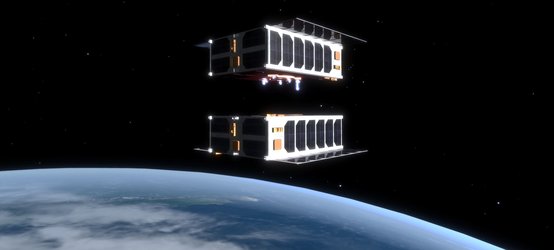Catching X-rays in stacked silicon
Eric Wille, optics engineer
ESA doesn’t do routine. Nowhere is this more true than for Science, where the goal of each new mission is to observe the Universe in novel ways. New technologies are required to make such missions possible, many years in advance. ESA’s Directorate of Technical and Quality Management is tasked with anticipating such needs, to make the right technology available at the right time, and solve any technical problems arising during development.
The scientific need was clear for a more capable X-ray observatory, to probe 10 to 100 times deeper into the cosmos, to observe the very hottest, high-energy celestial objects. ESA chose to develop the Athena mission, for launch in 2028. But the mission required an entirely new X-ray optics technology.
Energetic X-rays don’t behave like typical light waves; they can’t be reflected in a standard mirror. Instead they can only be reflected at shallow angles, like stones skimming along water. So multiple mirrors must be stacked together: ESA’s 1999-launched XMM-Newton has 174 gold-plated nickel mirrors nested inside one another. Athena however needs tens of thousands of densely packed mirror plates – the old technology was at its limit, and a much lighter solution had to be found.
The result was ‘silicon pore optics’ – a technology literally developed here at ESTEC, with ESA sharing the patent with the founder of Cosine Research, the company currently developing it. The idea is to stack industrial silicon wafers, normally used to manufacture semiconductors.

Access the video
These wafers already possess the necessary stiffness, low mass and super-polished surfaces – possessing practically atomic-scale flatness – and actually bond easily when placed together. The key point is that the semiconductor industry has already made these wafers available at a ridiculously low price, while mastering the machinery and processes we need. So we’re really riding an existing wave of terrestrial R&D.
Many potential problems have already been solved within ESA technology development activities. Our wafers have grooves cut into them, leaving stiffening ribs, to form the ‘pores’ that the X-rays pass along. After being coated with reflective metal they are ready for stacking. This ribbing is performed by adapting the equipment normally used to dice wafers into individual chips, except we don’t cut completely through the silicon.
The stacking is the most innovative part of the manufacturing process, where most of our investment has gone – employing a robotic arm in a cleanroom environment to avoid any dust contamination, targeting thousandth of a millimetre scale precision. The ribbed wafers need to be pressed together with just enough force to make them bond without breaking. Their alignment is checked immediately afterwards using an optical measuring system. The stacks must follow a slight curvature, tapering towards the desired point. These stacks are then glued into modules using standard space-qualified adhesive. We then test these modules within X-rays synchrotron facilities.
While launch is 12 years distant, we need to supply the complete flight mirror three to four years earlier
The technology is not completely qualified for space yet – it still needs to pass shock testing among other environmental tests, and we need to show the modules can be co-aligned to the precision that Athena needs – but it is the mission baseline.
Silicon pore optics began through an initial TRP project, where we were looking into its basic feasibility. R&D was then supported through Science’s own Core Technology Programme, with continuing TEC involvement. While launch is 12 years distant, we need to supply the complete flight mirror three to four years earlier, to allow for its testing and integration, and we have hundreds of modules – and remaining technical challenges – still to go.








